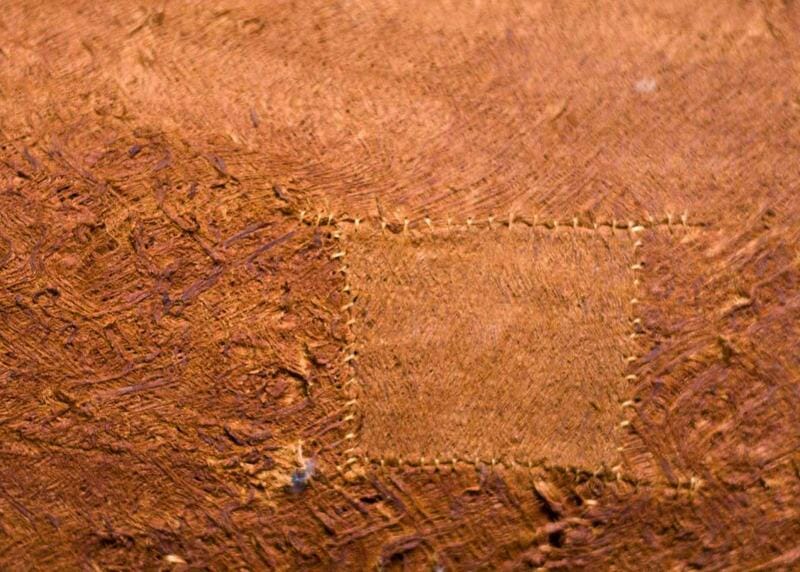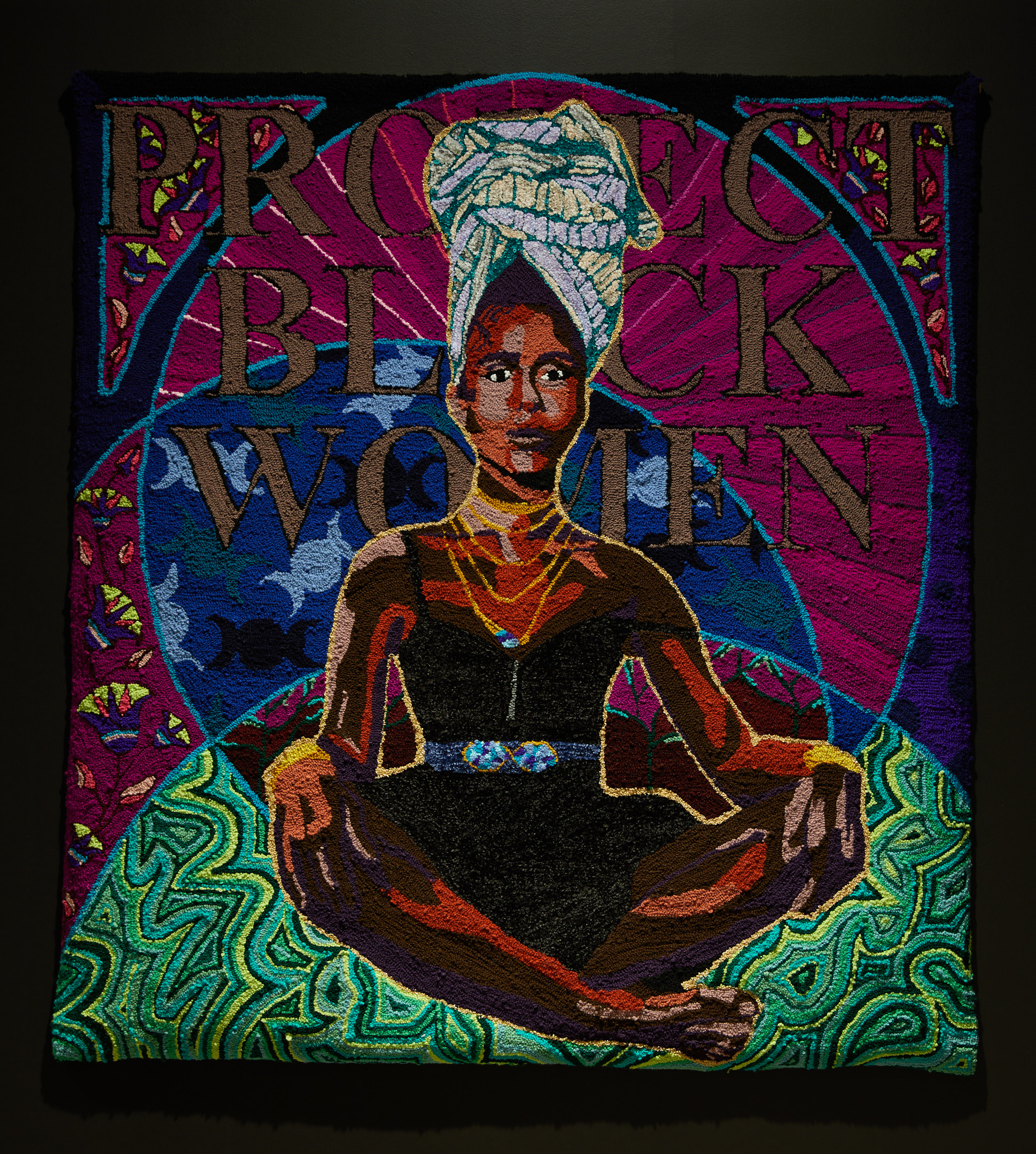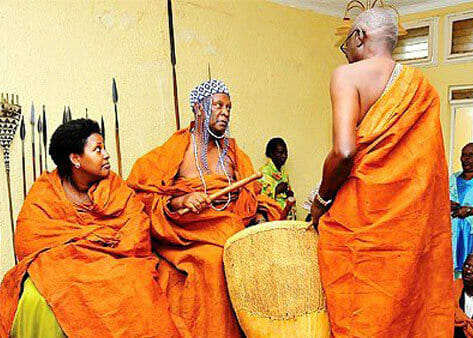 Buganda Royalty
Buganda Royalty
Buganda
In the south-western corner of Uganda, between Lake Victoria and the western Rift Valley, lies the Buganda Kingdom. The Ngonge clan are known as the craftsmen of the kingdom and are the traditional producers of barkcloth.
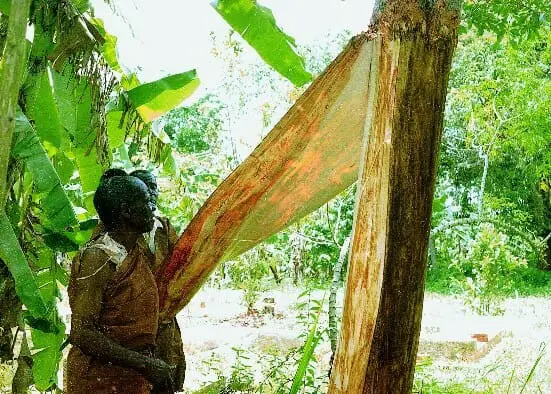
Matuba tree
Barkcloth, made from the inner bark of the Matuba tree (ficus natalensis), is one of the humankind’s oldest forms of savoir-fair or know-how. It predates the invention of weaving and has been inscribed in the UNESCO list of Intangible Cultural Heritage of Humanity.
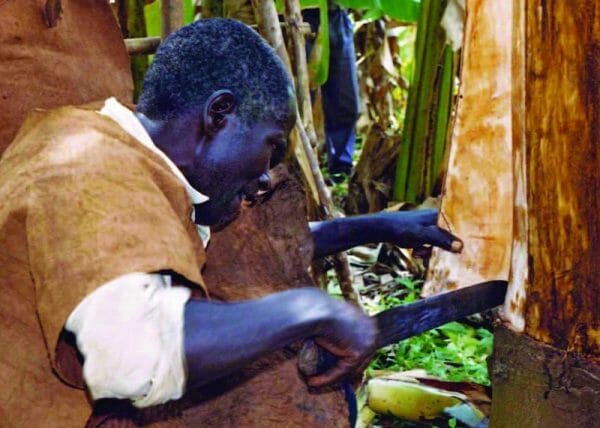
Harvesting
The bark is harvested during the wet season by scraping away the outer layer of thin white bark before cutting large pieces of inner bark from the tree. This is done with a sharpened piece of banana leaf stem to prevent contaminating the tree with disease or rust from metal instruments. The ‘wound’ in the tree is then wrapped in banana leaves for extra protection. Trees can be harvested once a year for about forty years, yielding 200-400 m² of bark cloth per tree.
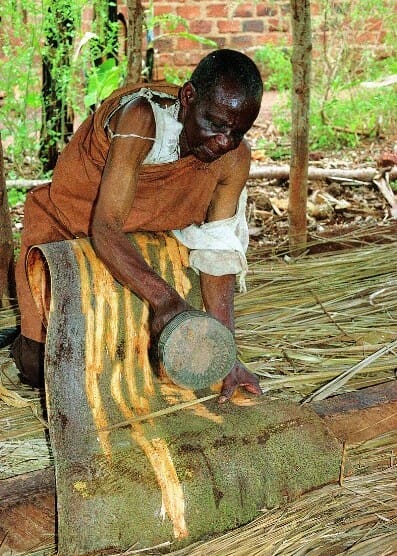
Processing
The long and strenuous task of processing starts with boiling the sheets of bark to release the sap. The bark is then beaten with different types of wooden mallets to stretch the fibres and to give it a fine texture and even terracotta colour.
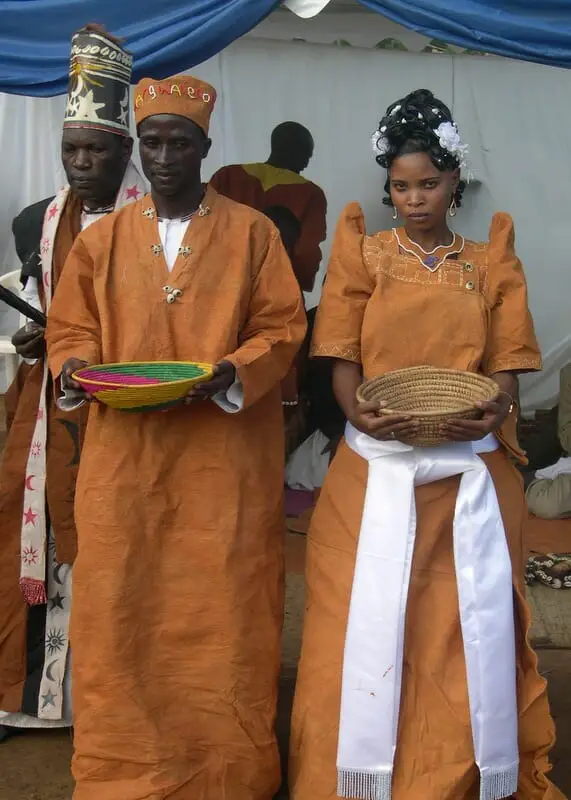
Tradition
Traditionally barkcloth is worn like a toga by both men and women, with women adding a sash around the waist. Barkcloth worn by kings and chiefs are dyed white or black. These clothes are worn during coronations, healing ceremonies, funerals and other cultural gatherings. The Buganda also bury their dead wrapped in barkcloth.

Revival
With the introduction of woven cotton cloth by Arab traders in the nineteenth century the production of barkcloth slowed and eventually died out. In recent years there has been a revival in the production of barkcloth. It is now used for modern purposes like housewares, curios and fashion items.

